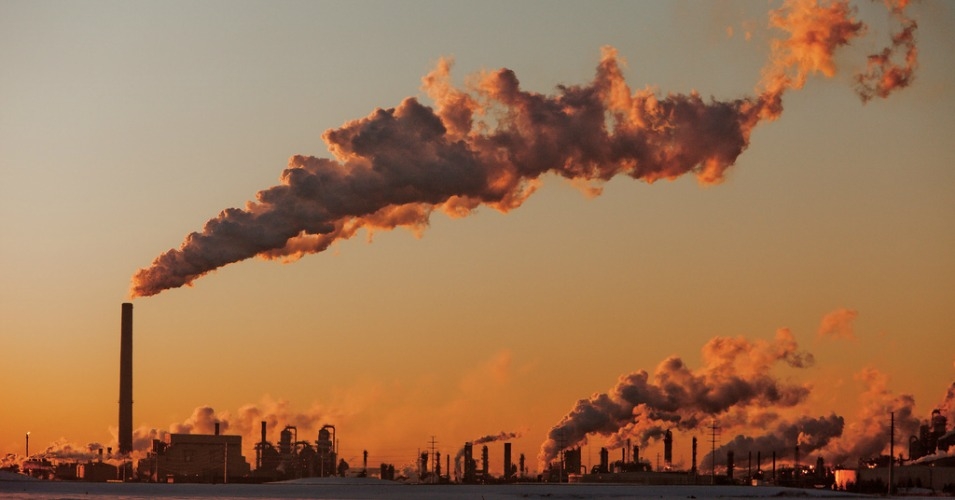The air quality has ‘been a cause for concern for the people of this community since 1966,’ says Fort McKay First Nation chief
By Nika Knight, staff writer for Common Dreams. Published 9-22-2016

The toxins discovered in the air include “hydrogen sulphide and carcinogens like benzene,” writes the Canadian Press. “Ozone and sulphur dioxide were ‘frequently’ above long-term health thresholds.” (Photo: Kris Krüg/flickr/cc
Confirming what a First Nations community surrounded by tar sands development has claimed for decades, new research says the reserve in northern Alberta is suffering from air pollution that is sometimes “at levels above what is recommended for human health.”
That’s according to Alberta’s chief health minister, Karen Grimsrud, as reported by theCanadian Press.
The provincial health ministry, industry regulator (which is industry-funded), and the Fort McKay First Nation all cooperated on a study released Thursday that finally confirmed what those in Fort McKay had long asserted: air pollution from nearby tar sands mining and refining has been sickening members of their community.
The toxins discovered in the air include “hydrogen sulphide and carcinogens like benzene,” writes the Canadian Press. “Ozone and sulphur dioxide were ‘frequently’ above long-term health thresholds.”
Allegations of heavily polluted air have gone on since oil industry development began in the area in the 1960s, Fort McKay First Nation chief Jim Boucher told the Canadian Press.
“We are very concerned,” Boucher added. “It’s been a cause for concern for the people of this community since 1966.”
Leo Gabriel Desjarlais, a hunter and trapper in the small reserve of only 600 people, “struggles to describe what it smells like when fumes from the oil sand operations blow into the community,” CBC writes.
“Sometimes it smells like horse shit,” Desjarlais told the broadcaster. “Sometimes it smells like burnt plastic.”
“Whenever the air smells like that he shuts the windows and stays inside,” CBC reports.
“I won’t go outside because you can feel it in your nostrils,” he said. “It’s really strong.”
CBC notes that “Desjarlais worries about the impact of the fumes on the health of the community’s most vulnerable.”
Yet as lifelong Fort McKay resident and Dene elder Celina Harpe told Outside Magazine several years ago, “[w]e never heard of asthma [before the tar sands development]. We didn’t know there was such thing as cancer. We had no name for it.”
Outside wrote that once the tar sands mining industry was well underway by the the 1970s, “[b]efore long it seemed as if everyone in the community was sick or had a family member who was seriously ill.” The magazine continued:
“I lost one son first with sickness before I lost my husband,” Harpe said. The main room of the community center was ringed with black-and-white portraits of band members. “That’s me there,” she said. Harpe couldn’t remember exactly when the photos were taken, but her portrait looked to be about a decade old.
“Beside me there, that lady, she died,” she said, pointing to the next photograph. “My cousin Stella, she’s gone. She just died in January.” She began moving down the line. “Her, my auntie, there in that corner by the flowers, she’s gone. He died last year, that gentleman. That guy is still alive. He died, this other one that’s next to Johnny.” Many of the people didn’t appear old, 50 at most. “That couple there, they’re gone. He’s still alive. She’s still alive. She’s gone. She’s gone. She’s gone. He’s gone. She’s gone. That lady’s gone.” I asked at what age people were being diagnosed with cancer. “People are dying at 35, 40,” she said. She shook her head.
“Between January 2010 and December 2014, the Alberta Energy Regulator received 172 complaints from Fort McKay residents, of which 165 were related to odors,” CBC reports.
“Now we have finally arrived at a process to resolve those concerns,” Boucher said.
The report contained 17 recommendations to improve air quality. But the province, industry, and First Nation will have to take concrete action to remedy the situation, ecologist David Schindler said, and in pro-industry Alberta it remains to be seen if that will happen: “The next step is to take some action in a timely manner to get rid of the problem,” he told CBC. “You have to see if people will act on the report.”

